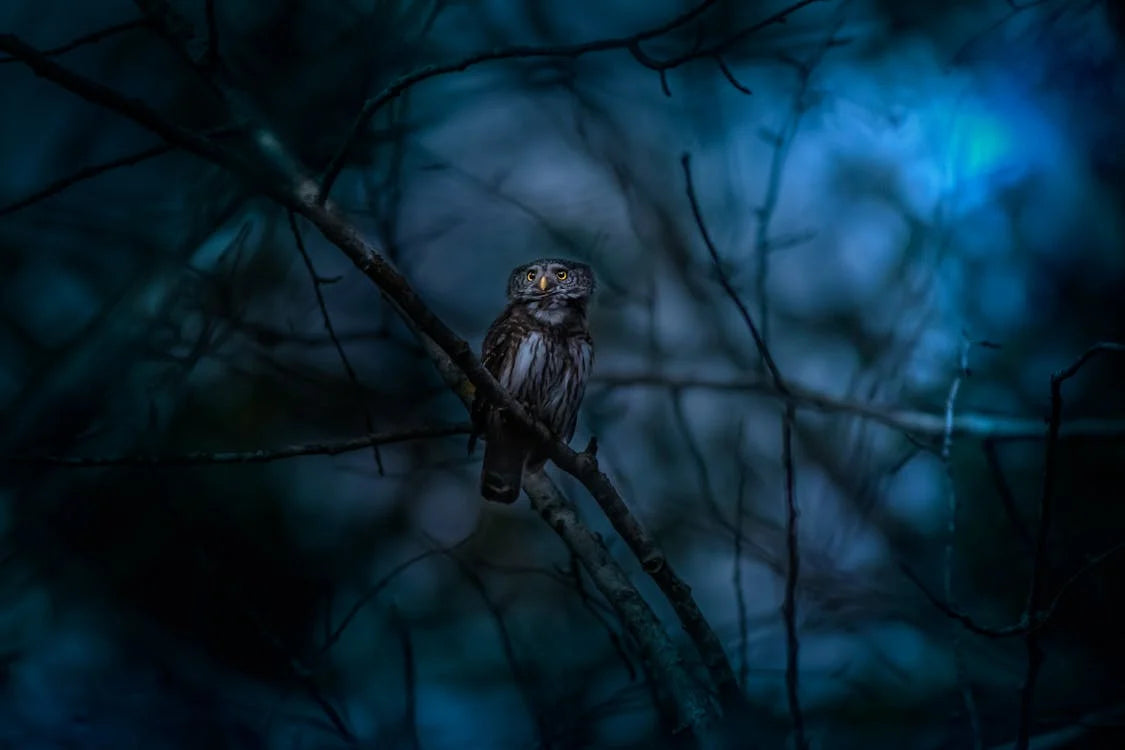In the realm of totem animals, the owl and the owl occupy a special place linked to nocturnal mysteries. Often associated with wisdom and knowledge, these night birds have fascinated ancient authors for thousands of years.
Moreover, paradoxically, the owl and the owl have always been revered and feared at the same time. Symbols of wisdom and mystery , they are present in many legends and traditions, often revered for their ability to see in the dark and to pierce the mysteries of the night. Whether they are struck on a Greek coin, associated with the goddess Athena or considered by the ancient Celts as a paragon of truth and honor, to succeed in piercing the darkness of their eyes, one thing remains: the Owl is a strange creature for man, endowed, it is said, with supernatural abilities.
But then, what is the symbolism of the Owl as a totem animal? What is its spiritual meaning?
The meaning and virtues associated with the Owl and the Owl
Our oldest traces of the Owl come from prehistory. Representations of owls have been found in cave paintings dating back to the Paleolithic period, about 30,000 years ago. Incidentally, a useless but amusing fact to know, in ancient Egypt, the owl was symbolized by a hieroglyph representing the letter "M".
In Greek mythology, the owl was associated with Athena, the goddess of wisdom, and was considered a symbol of protection and clairvoyance . Native American cultures also revere the owl as a spiritual guide and protector of spirits.
Over time, the following virtues were associated with it:
Symbolic 1: Wisdom and Knowledge 🦉
Symbolic 2: Mystery and Magic ✨
Symbolic 3: Transformation and Change 🌙

Representation of the owl by Uriel, artistic director at Runes de Chêne. Available as a t-shirt .
The Owl among the Celts.
The ancient Celts had a very reverent and mystical view of the owl. The owl was often seen here as a symbol of wisdom, mystery and transition. Our Celtic ancestors saw these nocturnal birds as guides to the afterlife and spiritual messengers capable of revealing hidden truths.
In particular, the owl was associated with important deities and mythological figures. For example, in the legend of Blodeuwedd, a woman is transformed into an owl as punishment for her betrayal, illustrating notions of retribution and spiritual transformation. Additionally, owls were linked to Cailleach, a Gaelic goddess of wisdom and knowledge, reinforcing their image as holders of ancient knowledge and deep mysteries.
The owl also held a significant place in Celtic traditions and rituals. It was often seen as a protector of the night and a silent observer, symbolizing the ability to see beyond appearances and discover hidden truths. These qualities made the owl a symbol of clairvoyance and intuition in Celtic spiritual and religious practices.
Thus, in Celtic culture, the owl was not simply a nocturnal bird, but a powerful spiritual symbol. It embodied concepts of wisdom, protection, and transition, having a profound influence on the myths, art, and rituals of the time.
The Owl and the Owl in Ancient Greece
Among the ancient Greeks, the owl, particularly the little owl (Athene noctua), was closely associated with the goddess Athena, the goddess of wisdom, war, and strategy. Athena was often depicted with an owl, a symbol of clairvoyance and sagacity. This association is largely due to the owl's nocturnal ability to see in the dark, symbolizing the goddess's ability to perceive truth and knowledge even in the dark.
The owl was also considered a good omen in times of war. For example, during the naval battle of Salamis, the appearance of owls was interpreted as a sign of support from Athena, which boosted the morale of the Greek soldiers. In addition, the significant presence of owls in the Athens region reinforced their status as a protective symbol and mascot of the city, representing qualities that the Athenians valued such as wisdom, strategy, and practical skills.

Athenian coins, often minted with an image of an owl, emphasized the importance of this bird as a symbol of the city and its patron goddess. This iconography persisted and was adopted by the Romans, where the owl became the symbol of Minerva, the Roman equivalent of Athena.
So yes, it can be said: among the ancient Greeks, the owl represented wisdom, divine protection, and clairvoyance, mainly because of its close connection to the goddess Athena and its unique ability to navigate and see in the dark. This symbolism was reinforced by mythological stories and cultural practices that have anchored the owl as an enduring emblem of wisdom and protection in Greek tradition.
An animal with a strangely silent flight
To hear an owl fly, good luck!
One of the most fascinating abilities about owls is their ability to fly silently, which plays a crucial role in their nocturnal hunting. Unlike most birds, owls can fly almost silently, an adaptation that allows them to surprise their prey.
This ability is due to the unique structure of their feathers. Owl feathers have combed edges, which break up air turbulence during flight. In addition, the surface of the feathers is soft and velvety, which helps absorb sound. This ingenious design significantly reduces noise, making their flight virtually inaudible.

A study published in the journal Science identified three key features of owl feathers responsible for this silent flight: a comb-like crest on the leading edge of the wing, a flexible fringe at the wingtip, and a velvety surface. These elements work together to dampen sounds at different frequencies, allowing owls to remain stealthy even when flapping their wings.
This silent flight has not only intrigued scientists, but also inspired technological innovations. For example, researchers are studying how to apply the principles of owl feathers to wind turbine blades and aircraft propellers to reduce noise. If these technologies can mimic owls, they could significantly reduce noise pollution in the aviation and renewable energy industries.
Thus, the silent flight of owls is a wonder of nature that illustrates their specialization as nocturnal predators. This astonishing adaptation continues to inspire modern technological solutions, demonstrating how much we still have to learn about sophisticated natural mechanisms.
The modern virtues of the Owl and the Owlet
Whether we are talking about knowledge and wisdom, discretion and observation, adaptability or intuition, the Owl immediately comes back as an ideal totemic symbol.
It is mainly aimed at people with a particular sensitivity, who wish to initiate a new path in their life, or just to keep themselves from lying. The notion of honor is never far away either, and for us, at Runes de Chêne we have associated it with the Othala rune, associated with heritage and wisdom.
To discover our Owl emblem, we invite you to go to this page .
Uriel of Oak Runes




